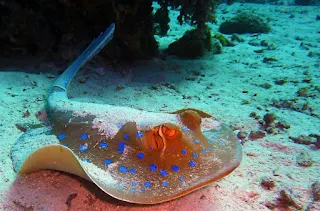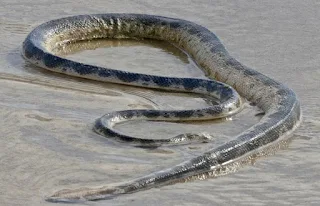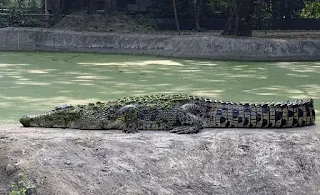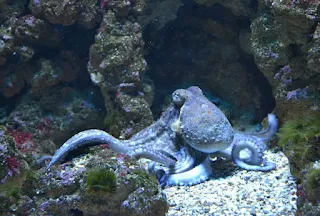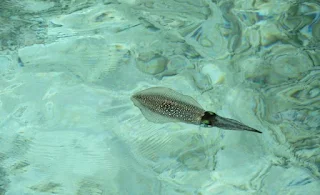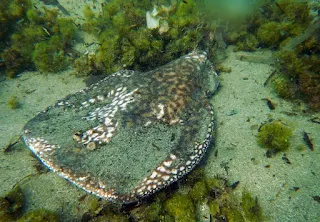As peaceful and pleasant as the ocean floors may appear, keep in mind that this habitat is also quite deadly, some of the world's deadliest organisms can be found in the sea or at the ocean's bottom.
Surprisingly, not all of them are what you might think in terms of size; some of the world's deadliest sea animals may be as small as a baseball in size, while others, such as the tiger shark, could reach a length of up to 5 meters.
Here's a look at some of the most dangerous sea critters. This is a subjective list, but we've taken the effort to examine the species of the deep ocean floors that evoke the most powerful combination of hostility, terror, actual agony, and, in some cases, death in people.
1. Sea Snake
Even when considered alongside terrestrial snakes, the sea snake is still the most deadly snake on the globe. The amount of poison a sea snake can inject is enough to turn a king cobra into a harmless earthworm; just a few milligrams of its venom can kill up to a thousand humans!
The sea snake, commonly known as hydrophiinae or coral reef snakes, is a venomous elapid snake that belongs to the hydrophiinae family. Despite their terrestrial ancestry, the majority of them have adapted to aquatic existence and are unable to migrate on land. They can be found in the waters off the coasts of Southeast Asia and Northern Australia.
2. Stones Fish
The stone fish has to be one of the ugliest fish I've ever seen; it doesn't attack you, but you don't want to step on it. It lives in the shallow waters of the tropics and can be found in the pacific and Indian oceans, the Red Sea, and the Great Barrier Reef.
It has a rock-like skin that makes it look unattractive. Basically, its poison produces great agony, and if not treated, it can lead to shock, paralysis, tissue death, and death. It can also lead to various complications if treatment is not provided fast, and the pain is so agonizing that the victim may ask to have the affected limb amputated.
3. Salt Water Crocodile
The saltwater crocodile can be found in India's eastern coast, in Southeast Asia, and on the eastern coasts of Australia and Africa.
The saltwater crocodile is a fearsome and adaptive predator that can devour practically any animal that enters its domain. It's a predator lurking in the shadows, waiting for the right moment to attack.
Its teeth are meant to grip onto the prey item rather than rend flesh, reducing the animal's chances of escaping. These characteristics enable the crocodile to capture and drag the victim into the water, where it is ultimately devoured whole or torn apart. The saltwater crocodile is the most deadly to humans of all the crocodile species.
4. Octopus with Blue Rings
The blue-ringed octopus, which is only 8 inches long, has enough venom to kill a human—in fact, they have enough venom to kill roughly 30 humans in a matter of minutes. They are known to be among the most venomous marine organisms on the planet.
Its venom is 10,000 times more potent than cyanide, despite its small size and relatively docile character. Bile from a blue-ringed octopus causes paralysis, which can lead to death if medicine is not delivered promptly.
It may also surprise you to learn that the bite is painless, so you may not even realize you've been injected until you start experiencing symptoms. Because the blue-ringed octopus only bites when provoked, staying your distance is the best course of action, especially because this deadly sea creature has no anti-venom.
5. Jelly Fish in a Box
The box jellyfish (sometimes known as a sea wasp) is a hazardous species that lives in Australia's north east. The jellyfish possesses severe 60mins on its tentacles, which can interrupt cartio-respiratory function in three minutes if it comes into contact with a human. According to the United States National Foundation, 20 to 40 individuals die each year in the Philippines from box jellyfish stings.
The venom of the box jellyfish is powerful enough to kill 60 adult humans in the least amount of time. Its venom affects the heart, neurological system, and skin cells, making it one of the most lethal snakes on the planet. Human victims have been known to go into shock and drown or die of heart failure before even reaching the shore due to the excruciating pain.
6. Sea Lion
External ear flaps, long fore flippers, the ability to move on all four legs, and short, dense fur distinguish sea lions. They can be trained and are popular at zoos, however they have been known to bite people.
Sea lions are normally friendly, but they can be aggressive and deadly during mating season. They can attack people in the same way that they can be trained. According to some local biologists, sea lion behavior is unpredictable and can turn hostile at any time.
7. Puffer Fish
Humans are poisoned by a toxin found in puffer fish. One puffer fish contains enough venom to kill 30 people, and there is no known antidote. Despite the fact that one incorrect cut means immediate death, these fish are considered a delicacy in Japan.
Humans are poisoned by a venom found in puffer fish. Tetrodotoxin (TTX), a lethal poison, is found in this fat-bodied fish. This toxin is reported to be stronger than cyanide and capable of killing 30 individuals at once. It causes a person's breathing to become difficult, eventually leading to death.
8. Cat Fish
Surprised? Yes, with their small and cute whiskers, they appear quite innocent, looking very harmless and peace-loving. On the other hand, when provoked, they may be extremely dangerous.
When attacked, the catfish reacts by withdrawing three of its barbed spines from the back and side fins. It may also be of interest to know that its venom can remain active after death.
9. Stingray
The stingray, as lethal as it is, only attacks in self-defense or when it is unintentionally stepped on. To attack, it must be directly opposite its prey so that it may flip its long tail from behind and smack the victim in the face.
The stingray hits with its tail, and the power with which the stingray penetrates the victim's body tears the victim's protective sheath, allowing the venom to seep out into the wound. But it doesn't stop there; while the venom is lethal, extracting the sting from the victim's body can be extremely painful, even fatal.
Thus, an article ablout The World's Top 9 Deadliest Sea Animals. Hopefully, this information will usefull to you.

